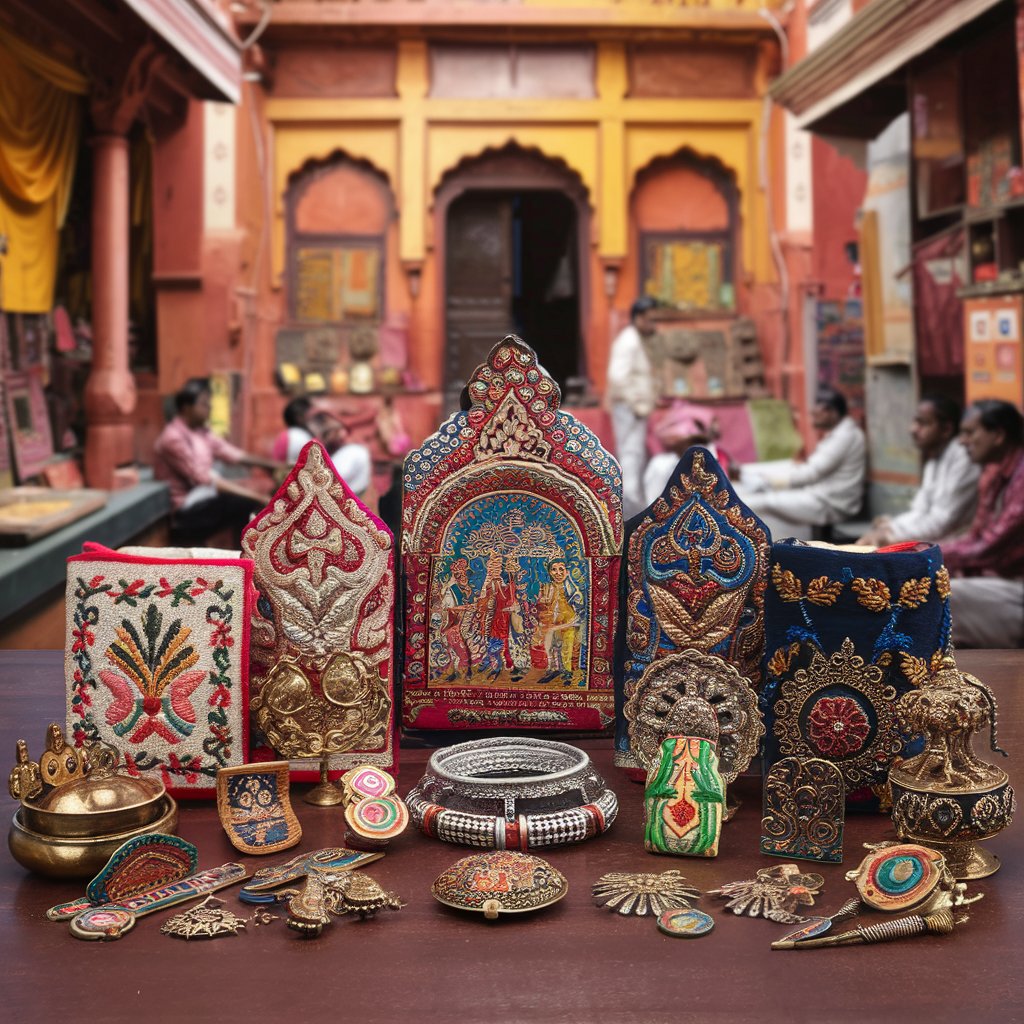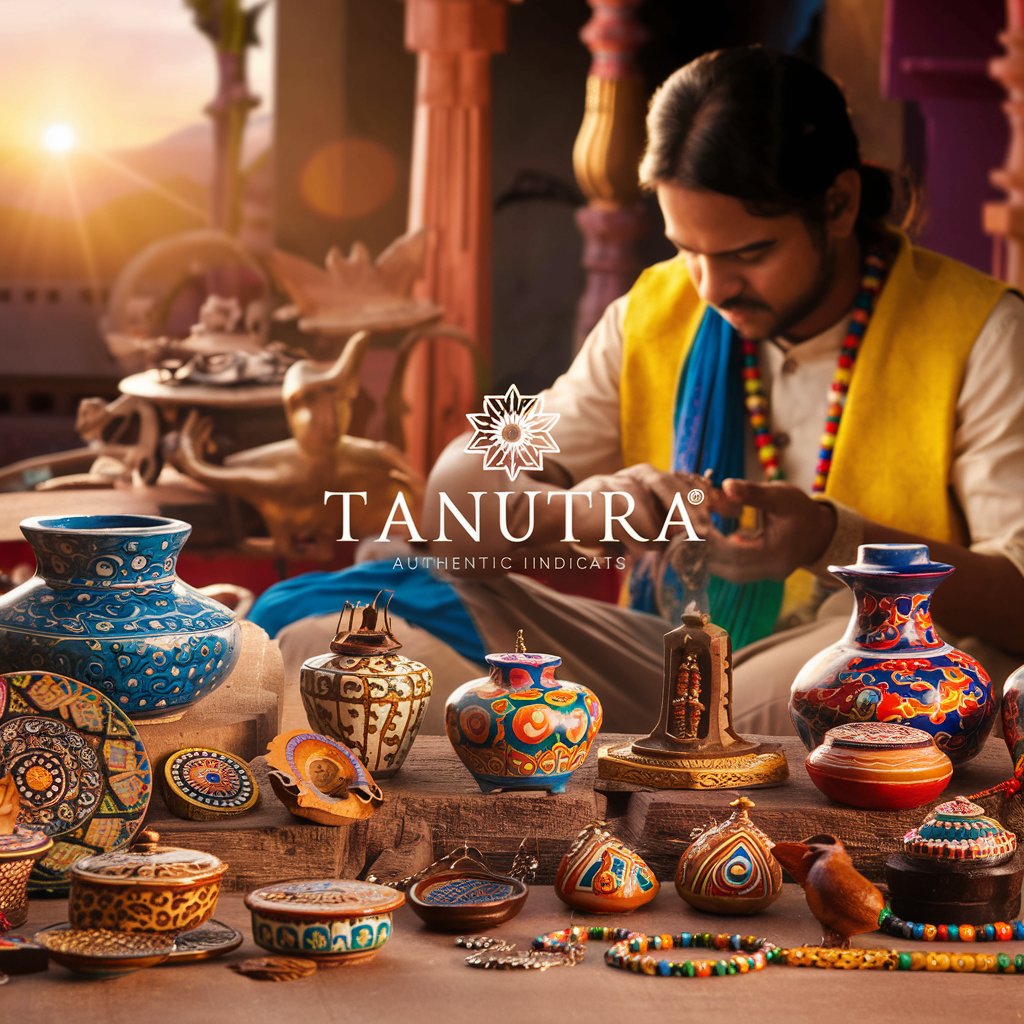The Historical Origins of Indian Handicrafts: A Journey Through Time
India, a country renowned for its extensive cultural legacy, has long been associated with handicrafts. Indian handicrafts have a rich history that spans thousands of years, from the complex sculptures of the Indus Valley Civilization to the exquisite fabrics of the Mughal Empire. These handcrafted goods tell stories of talent, tradition, and the creative energy of the craftsmen that have been passed down through the years; they are more than simply things. It’s amazing to learn about the precise techniques and historical roots of these exquisite works, which are now made available in the USA and Canada through companies like Tanutra that deliver real, handcrafted Indian goods.

Ancient Beginnings: The Dawn of Craftsmanship
One of the first urban cultures in history, the Indus Valley Civilization (c. 3300–1300 BCE), is where the tale of Indian handicrafts starts. Archaeological finds from places like Mohenjo-Daro and Harappa demonstrate an advanced level of metalworking, beading, and ceramic artistry. The complex jewellery, terracotta figures, and exquisite but utilitarian pottery made by the people of this era laid the groundwork for India’s rich artisan traditions.
Evolution Through Dynasties: Crafting History
India’s handicrafts reflected the progression of its many kingdoms, each contributing its own distinct style. Stone carving and sculpture reached its zenith during the Mauryan and Gupta eras (322 BCE–550 CE). Indian art became known for its temples and stupas with its intricate sculptures and carvings.
A confluence of Persian and Indian art elements resulted in the Mughal era (c. 1526–1857), which produced superb metalwork, opulent fabrics, and minute paintings. Products like Pashmina shawls and zari work (gold thread embroidery), which are still in style today, have clear Mughal influences in their intricate patterns and superb craftsmanship.
Regional Diversity: A Tapestry of Cultures
India’s vast geographical and cultural diversity has given rise to an incredible variety of handicrafts, each region boasting its own unique style and technique. For instance:
- Rajasthan is renowned for its vibrant textiles, block printing, and blue pottery.
- Gujarat offers intricate mirror work and handwoven textiles.
- Kashmir is famous for its Pashmina shawls and papier-mâché crafts.
- Kerala is known for its coir products and traditional murals.
- West Bengal is celebrated for its terracotta art and Kantha embroidery.
The Crafting Process: From Hands to Hearts
- Indian handicraft production is a labor of love that requires painstaking procedures that differ depending on the craft and location. Below is a peek at the steps that go into creating some of these classic pieces:
A. Designing: A design, which is generally based on mythology, the natural world, or everyday life, is the first step in the process. to ensure that every piece has cultural meaning, artisans create designs that are occasionally passed down through the centuries.
B. Purchasing Materials: Materials such as clay and wood and metal, and fabrics, natural colors are purchased based on the type of craft. Numerous craftspeople priorities sustainability and genuineness by utilizing locally accessible materials.
C. Crafting: This is the magical part. Expert hands shape, cut, weave, or stitch the creations to life. Every craft has special skills of its own.- Pottery involves shaping clay on a wheel and firing it in a kiln.
- Textile weaving includes setting up looms and interlacing threads to create intricate patterns.
- Embroidery requires precise needlework to embellish fabrics with beautiful designs.
- Metalwork involves casting, engraving, and polishing to produce stunning items like jewelry and utensils.
2. finishing Touches: Painting, varnishing, or polishing are examples of the last touches that guarantee a product’s beauty and durability. The handicraft’s durability and aesthetic appeal are improved by these last touches.
3. Quality Check: To make sure every item lives up to the high standards demanded of Indian handicrafts, a comprehensive quality check is performed on each one. This action is essential to preserving the artists’ and the craft’s reputation.
Preserving Tradition in the Modern World
Today, as Tanutra aims to increase its online presence in the USA and Canada, it plays a crucial role in preserving and promoting these traditional crafts. By offering a platform for these unique, handcrafted items, Tanutra supports artisans and brings the rich cultural heritage of Indian handicrafts to a global audience.
Explore the World of Indian Handicrafts
Discover the beauty and craftsmanship of authentic Indian handicrafts with Tanutra. Each piece tells a story of tradition, skill, and cultural heritage. Visit our Tanutra e-commerce platform today and bring a piece of India’s rich heritage into your home. Embrace the art, support the artisans, and make a statement with handcrafted elegance.
